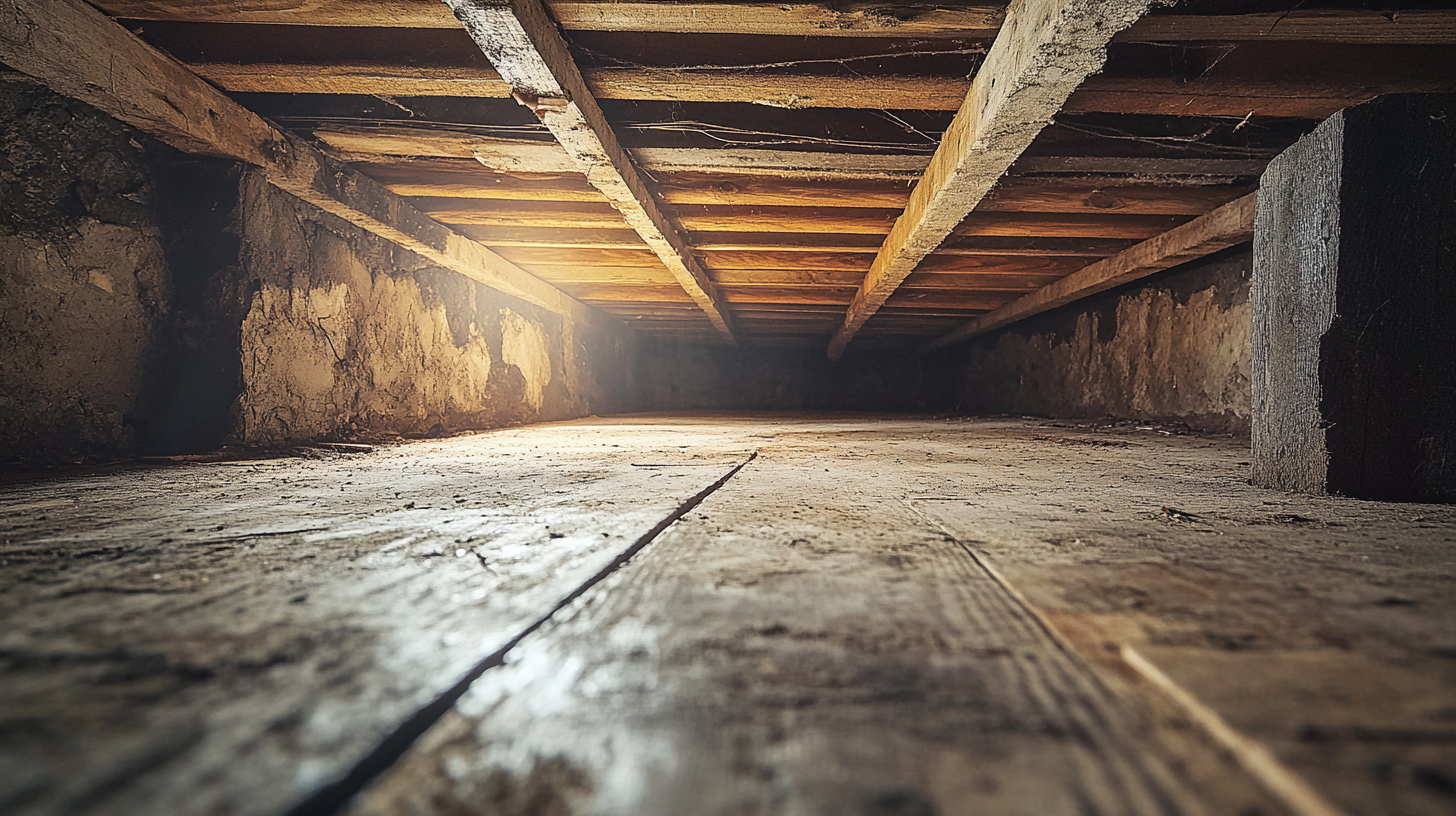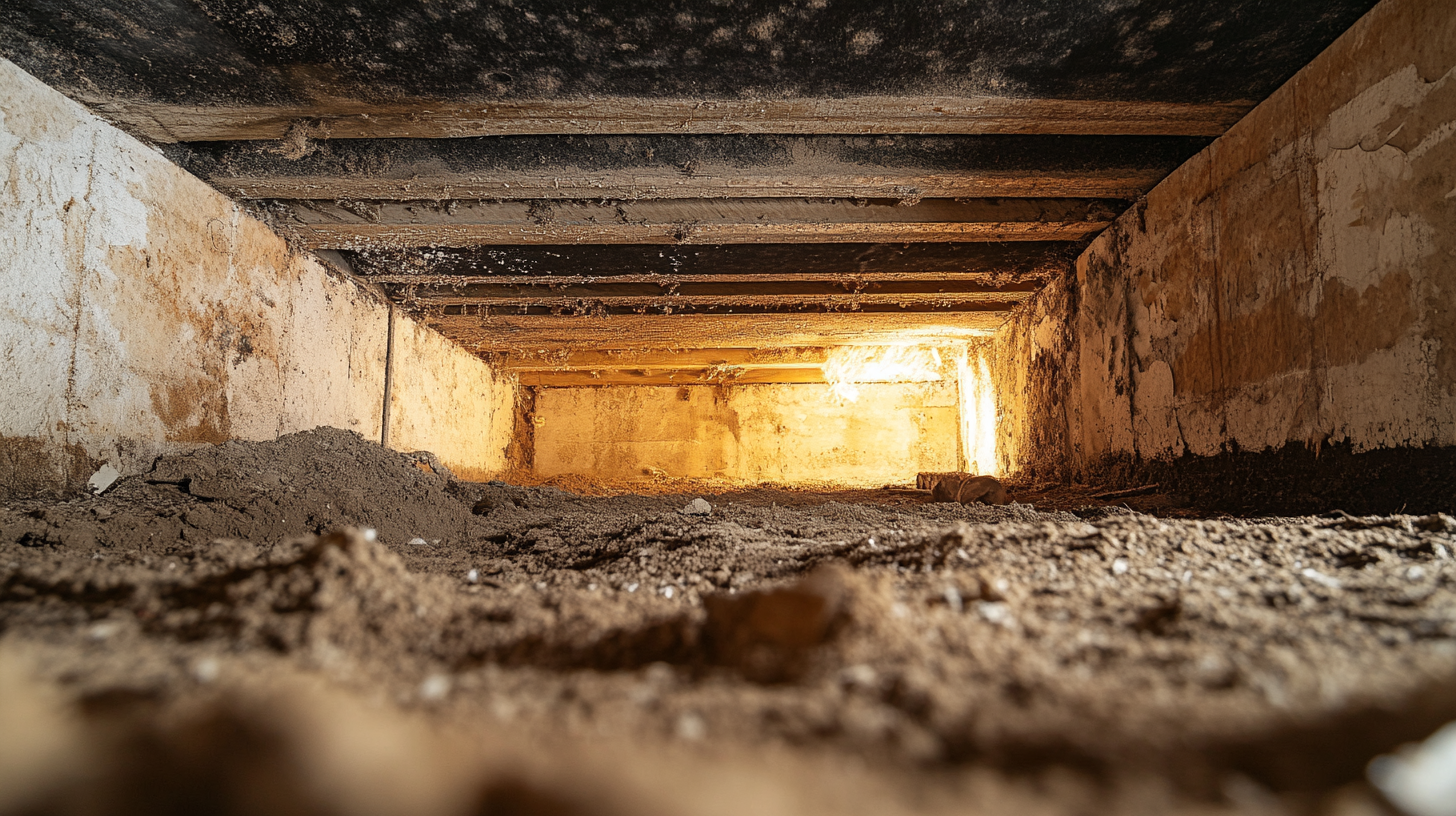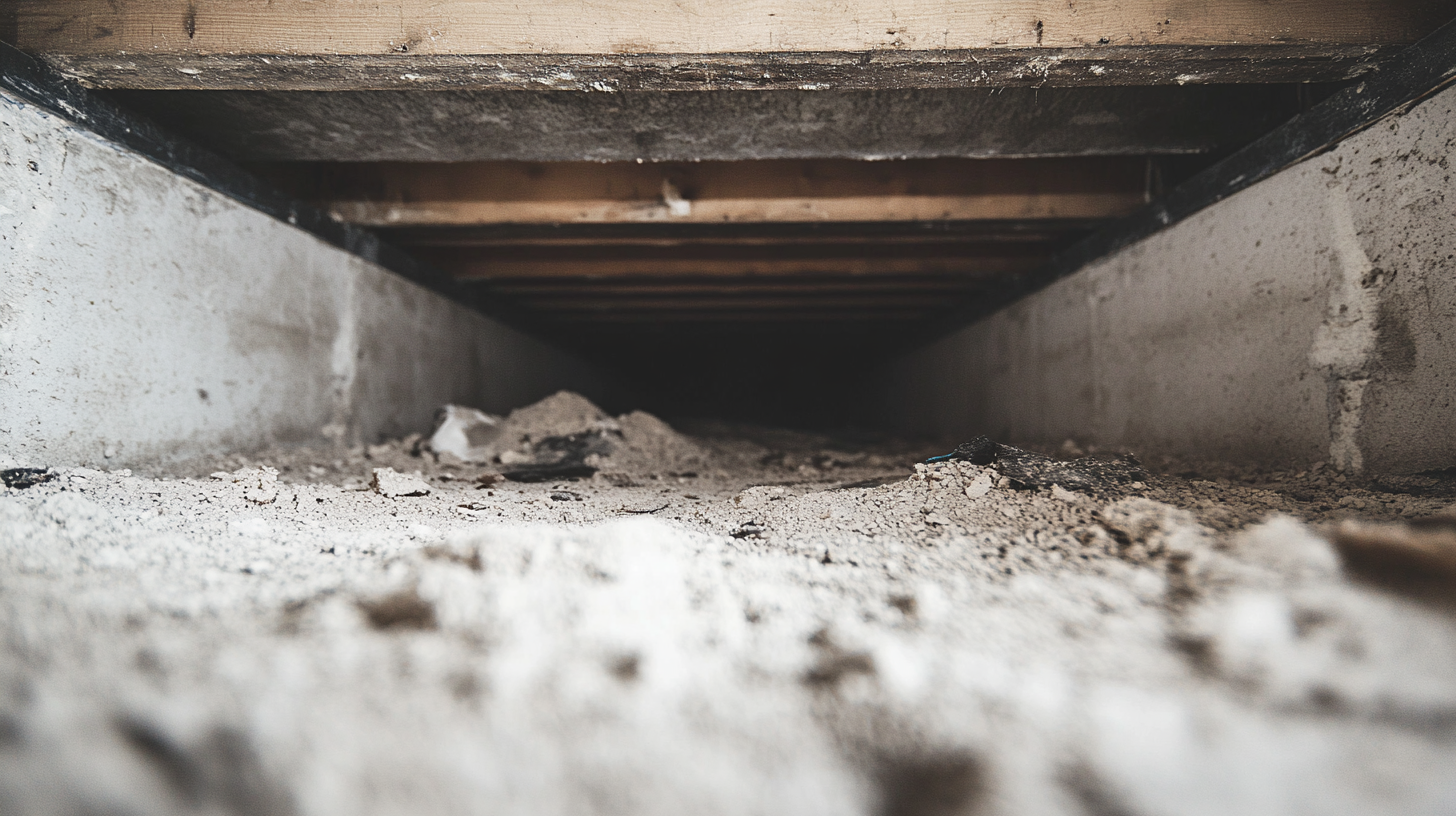Preventing Soot Buildup: Tips and Tricks

Soot may seem like a mere byproduct of everyday activities, but its presence in our homes can have deeper implications for our health and environment than many of us realize. This fine black or brown powder is a form of particulate matter, produced by the incomplete combustion of fossil fuels, wood, and other organic materials. While soot particles are tiny, their effects on indoor air quality and personal well-being are significant, making it crucial for homeowners to understand where it comes from and how it can be managed.
In this blog, we delve into the nature of soot, shedding light on its composition and the common processes that lead to its formation. From the cozy warmth of a fireplace to the unseen emissions of water heaters and cooking appliances, soot finds its way into our living spaces through various sources, many of which are integral to our daily routines. By identifying these sources, we aim to equip you with the knowledge needed to minimize soot accumulation in your home, thereby enhancing your indoor air quality and safeguarding your family's health.
Join us as we explore the common sources of soot in homes, offering insights and tips on how to address this pervasive issue. Whether it's adjusting your heating practices or making simple lifestyle changes, understanding soot is the first step towards creating a cleaner, healthier living environment for you and your loved ones.
Strategies for Minimizing Soot Production
In our ongoing effort to maintain a healthy and clean home environment, understanding how to minimize soot production is crucial. Soot, while a common byproduct of various household activities, can adversely affect indoor air quality and personal health. Implementing effective strategies to reduce its production can lead to a cleaner, safer living space. This section explores practical approaches to lessen soot accumulation through proper ventilation and regular maintenance of combustion sources.
Proper Ventilation
The Importance of Adequate Ventilation in Areas Prone to Soot
Adequate ventilation is key to preventing soot accumulation in your home. Areas that frequently experience combustion processes, such as kitchens, fireplaces, and rooms with candles, require efficient airflow to disperse and eliminate soot particles before they settle on surfaces or impact air quality. Proper ventilation not only helps in reducing soot but also minimizes the risk of other pollutants accumulating indoors.
Tips for Improving Airflow in Your Home
- Enhance Natural Ventilation: Open windows and doors whenever possible to allow fresh air to circulate throughout your home, especially in areas where combustion occurs frequently.
- Use Exhaust Fans: Install and use exhaust fans in your kitchen and bathroom. These fans are specifically designed to expel pollutants and moisture, significantly reducing soot and other particulate matter.
- Consider Air Purifiers: For additional support, use air purifiers with HEPA filters in rooms where soot production is a concern. These devices can capture a high percentage of airborne particles, including soot.
Regular Maintenance of Combustion Sources
Guidelines for Maintaining Fireplaces, Stoves, and Heating Systems
Regular maintenance of appliances and fixtures that burn fuel is essential to minimize soot production. Poorly maintained combustion sources are not only inefficient but also major contributors to indoor soot accumulation.
- Fireplaces: Ensure that your fireplace is cleaned and inspected at least once a year by a professional. This includes checking for blockages, cleaning the chimney, and ensuring the fireplace draws air efficiently.
- Stoves and Heating Systems: Follow the manufacturer's guidelines for maintenance and have these appliances serviced annually. Regular cleaning of filters and vents can prevent soot buildup and ensure they operate efficiently.
- Importance of Regular Inspections and Cleanings
Routine inspections and cleanings of combustion sources can significantly reduce the risk of soot production. These practices ensure that appliances are operating correctly and safely, preventing inefficient combustion that can lead to soot accumulation. Moreover, regular maintenance can extend the lifespan of your appliances, providing long-term benefits for your home and health.
Tips for Reducing Soot Buildup
Reducing soot buildup in your home not only contributes to a cleaner environment but also enhances indoor air quality and overall health. By choosing the right materials for everyday use and adopting effective cleaning habits, you can significantly decrease the presence of soot. This section offers practical advice on selecting low-soot materials and establishing cleaning routines to keep soot at bay.
Choosing the Right Materials
Recommendations for Low-Soot or Soot-Free Candles, Fuels, and Other Materials
The materials you choose for burning in your home, whether for warmth, cooking, or ambiance, play a significant role in soot production. Opting for low-soot or soot-free options can drastically reduce the amount of particulate matter released into your indoor environment.
- Candles: Look for candles made from soy, beeswax, or vegetable oils. These materials tend to burn cleaner than traditional paraffin wax, producing less soot.
- Fuels: When using fireplaces, stoves, or heaters, select high-quality fuels. For wood-burning appliances, choose dry, seasoned wood that burns more completely, minimizing soot. For gas appliances, ensure the gas is burning cleanly and efficiently.
- Other Materials: Be mindful of the materials used in incense and oil burners. Opt for natural, high-quality products designed to minimize smoke and soot production.
Cleaning Habits to Prevent Soot Accumulation
Routine Cleaning Practices That Help Minimize Soot Buildup
Regular cleaning is essential to prevent soot from accumulating on surfaces and affecting air quality. Establishing a routine that addresses areas prone to soot can keep your home cleaner and healthier.
- Frequent Dusting and Vacuuming: Regularly dust and vacuum your home, especially in areas near combustion sources. Use a vacuum with a HEPA filter for best results, as it can capture smaller particulate matter, including soot.
- Clean Combustion Sources: Regularly clean areas around fireplaces, stoves, and candles. Removing residue promptly can prevent soot from settling and spreading.
- Effective Cleaning Techniques for Areas Prone to Soot
Some areas of your home may be more susceptible to soot buildup due to proximity to combustion sources or poor ventilation. Here are some techniques to effectively clean these areas:
- Use Soot-Specific Cleaners: For surfaces that have accumulated soot, use cleaning products designed to remove soot without damaging the surface. Always follow the manufacturer's instructions for the best results.
- Regularly Clean Filters and Vents: Clean or replace filters in your HVAC system, dryers, and kitchen vents to ensure they are not clogged with soot, which can reduce their efficiency and contribute to poor indoor air quality.
Innovative Solutions for Soot Prevention
In the quest for a cleaner, healthier home environment, technological advancements offer promising solutions to combat soot accumulation. From sophisticated air purifiers to smart home technologies, these innovative tools can significantly reduce soot particles in the air, contributing to improved indoor air quality. This section explores how these solutions work and provides recommendations for devices best suited for tackling soot.
Air Purifiers and Filters
How Air Purifiers and Filters Can Help Reduce Soot Particles in the Air
Air purifiers and filters play a crucial role in capturing soot particles and other pollutants, preventing them from circulating through your home. By trapping these particles, these devices ensure that the air you breathe is cleaner and healthier.
- HEPA Filters: High-Efficiency Particulate Air (HEPA) filters are highly effective at capturing particles as small as 0.3 microns, including soot. Air purifiers equipped with HEPA filters can remove a significant amount of soot from indoor air.
- Activated Carbon Filters: While HEPA filters capture particles, activated carbon filters are excellent for adsorbing gases and odors, providing a comprehensive air cleaning solution.
Recommendations for Types of Purifiers and Filters Best Suited for Soot
When selecting an air purifier or filter for soot, consider the following:
- Choose Air Purifiers with HEPA and Activated Carbon Filters: For the most effective soot removal, opt for air purifiers that combine HEPA and activated carbon filters. This combination ensures both particulate and gas-phase pollutants are addressed.
- Consider Room Size: Ensure the air purifier is rated for the size of the room where it will be used. A purifier that's too small for the area will be less effective.
- Look for Certifications: Devices certified by reputable organizations for air purification performance can provide additional assurance of their effectiveness.
Smart Home Technologies
Overview of Smart Home Solutions That Can Help Monitor and Manage Soot Production
Smart home technologies offer innovative ways to monitor and manage air quality, including soot levels, in real-time. These solutions can alert homeowners to potential issues and help in taking proactive measures to maintain a clean indoor environment.
- Smart Air Quality Monitors: These devices can detect a wide range of pollutants, including particulate matter like soot, and provide real-time feedback on indoor air quality. Many can be integrated with other smart home devices for automated air purification.
- Smart HVAC Filters: Some smart filters can track their own usage and effectiveness, alerting you when they need to be replaced. This ensures your HVAC system is always equipped to filter out soot efficiently.
Integrated Smart Home Systems: Systems that integrate air quality monitoring with automated responses, such as activating air purifiers or adjusting HVAC settings, can optimize indoor air quality without manual intervention.
The Benefits of Preventing Soot Buildup
Preventing soot buildup in your home is not just about maintaining cleanliness; it's a proactive step towards ensuring a healthier living environment and realizing significant long-term savings. Soot, a byproduct of incomplete combustion, can adversely affect indoor air quality and contribute to various health issues. By taking measures to minimize soot production and accumulation, homeowners can enjoy a myriad of benefits ranging from improved health to reduced maintenance costs. This section delves into the health advantages and financial savings associated with preventing soot buildup.
Health Advantages
How Preventing Soot Buildup Contributes to Better Indoor Air Quality and Health
The presence of soot in the home can significantly compromise indoor air quality, posing health risks to occupants. Soot particles are small enough to be inhaled deeply into the lungs, where they can cause respiratory issues, aggravate allergies, and even lead to more serious conditions over time.
- Improved Respiratory Health: By reducing soot levels in the home, individuals may experience fewer respiratory symptoms, such as coughing, wheezing, and shortness of breath, particularly in those with pre-existing conditions like asthma or COPD.
- Enhanced Overall Well-being: Cleaner air contributes to better health outcomes overall, including reduced risks of cardiovascular diseases and improved cognitive function due to lower exposure to airborne pollutants.
- Allergy and Asthma Relief: Minimizing soot and other particulate matter can lead to fewer allergy and asthma triggers, creating a more comfortable environment for sensitive individuals.
Long-Term Savings
How Preventive Measures Can Save Money on Cleaning and Maintenance in the Long Run
While the initial investment in soot prevention measures may seem like an added expense, the long-term savings can be substantial. By addressing soot at its source, homeowners can reduce the need for frequent deep cleanings, prolong the life of household surfaces and systems, and avoid costly repairs or replacements.
- Reduced Cleaning Costs: Regular maintenance and soot prevention strategies can keep surfaces cleaner for longer, reducing the frequency and cost of professional cleaning services.
- Prolonged Lifespan of Home Appliances and Surfaces: Soot can corrode and damage various surfaces and components of home heating systems. Preventative measures can extend the lifespan of these items, saving money on replacements.
- Lower Energy Bills: Appliances that are free of soot buildup operate more efficiently, consuming less energy and leading to lower utility bills.
Understanding Soot and Its Sources
Soot is a common byproduct of the combustion process, often seen as a black powder or dust that accumulates in and around our homes. Despite its seemingly simple appearance, soot formation involves complex chemical reactions and has various sources, some of which are found in everyday activities. This blog post delves into the science behind soot formation and identifies common household activities that contribute to soot buildup.
The Science Behind Soot Formation
Soot is formed from incomplete combustion, a process where fuel does not burn completely, turning into carbon particles that aggregate into what we recognize as soot. This incomplete combustion is typically due to a lack of sufficient oxygen to allow for the complete conversion of fuel into carbon dioxide and water. Instead, it produces carbon monoxide, various hydrocarbons, and carbon particles—soot.
The formation of soot can be influenced by several factors, including the type of fuel used, the temperature of combustion, and the availability of oxygen. For instance, higher combustion temperatures and a richer fuel mixture (more fuel, less oxygen) tend to produce more soot. Understanding these factors is crucial for devising strategies to minimize soot production, whether in industrial settings or daily household activities.
Common Household Sources of Soot
Soot is not just a byproduct of industrial processes; it can also result from everyday activities within our homes. Recognizing these sources is the first step toward reducing indoor air pollution and maintaining a cleaner living environment. Here are some common household activities that contribute to soot buildup:
- Cooking: High-temperature cooking, especially using open flames like gas stoves, can produce soot. Frying, grilling, and other forms of cooking that involve direct contact with flame are particularly prone to generating soot particles.
- Burning Candles: While candles add ambiance and fragrance to a room, they can also be a significant source of soot, especially if they burn in an area with drafts or if the wick is too long.
- Fireplaces: Wood-burning fireplaces are a well-known source of soot. The type of wood burned, the moisture content of the wood, and the burning conditions (such as the amount of oxygen available) can all affect the amount of soot produced.
Understanding these sources and the conditions that exacerbate soot production can help homeowners take proactive steps to minimize soot buildup, such as ensuring proper ventilation, choosing candles made from cleaner-burning waxes, and maintaining a clean and efficient fireplace.
By addressing the science behind soot formation and identifying common household sources, this blog aims to educate readers on the importance of minimizing soot for both health and environmental reasons. Reducing soot production not only contributes to cleaner air quality but also enhances the overall well-being of individuals and communities.
FAQs
Contact Fast Response Cleaning & Restoration Today!
Fast Response Cleaning & Restoration will do everything we can to ensure your experience with us is excellent.
Request A FREE Estimate
Request A FREE Estimate Form
CHECKOUT RECENT POST



Have an Emergency? We're Here to Help!
When it comes to disaster cleanup, we are a seasoned veteran in the industry and have helped hundreds of property owners just like you.
Our disaster recovery teams are available 24-7 to quickly clean up and repair disasters of all types.
